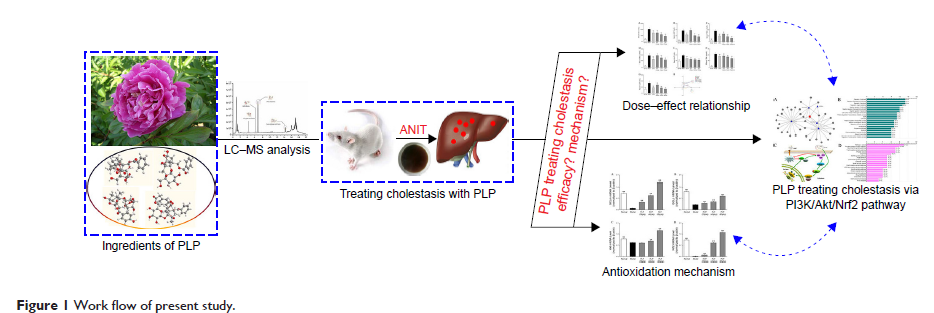108384
论文已发表
注册即可获取德孚的最新动态
IF 收录期刊
- 3.4 Breast Cancer (Dove Med Press)
- 3.2 Clin Epidemiol
- 2.6 Cancer Manag Res
- 2.9 Infect Drug Resist
- 3.7 Clin Interv Aging
- 5.1 Drug Des Dev Ther
- 3.1 Int J Chronic Obstr
- 6.6 Int J Nanomed
- 2.6 Int J Women's Health
- 2.9 Neuropsych Dis Treat
- 2.8 OncoTargets Ther
- 2.0 Patient Prefer Adher
- 2.2 Ther Clin Risk Manag
- 2.5 J Pain Res
- 3.0 Diabet Metab Synd Ob
- 3.2 Psychol Res Behav Ma
- 3.4 Nat Sci Sleep
- 1.8 Pharmgenomics Pers Med
- 2.0 Risk Manag Healthc Policy
- 4.1 J Inflamm Res
- 2.0 Int J Gen Med
- 3.4 J Hepatocell Carcinoma
- 3.0 J Asthma Allergy
- 2.2 Clin Cosmet Investig Dermatol
- 2.4 J Multidiscip Healthc

已发表论文
植物芍药 (Paeonia lactiflora Pall.) 经由 PI3K/Akt 信号通路激活 Nrf2,从而防止 ANIT 诱发胆汁淤积
Authors Ma X, Zhao Y, Zhu Y, Chen Z, Wang J, Li R, Chen C, Wei S, Li J, Liu B, Wang R, Li Y, Wang L, Xiao X
Received 7 June 2015
Accepted for publication 28 July 2015
Published 2 September 2015 Volume 2015:9 Pages 5061—5074
DOI http://dx.doi.org/10.2147/DDDT.S90030
Checked for plagiarism Yes
Review by Single-blind
Peer reviewers approved by Dr Rasika Samarasinghe
Peer reviewer comments 3
Editor who approved publication: Professor Wei Duan
Background: Paeonia lactiflora Pall. (PLP), a traditional Chinese herbal medicine, has been used for hepatic disease treatment over thousands of years. In our previous study, PLP was shown to demonstrate therapeutic effect on hepatitis with severe cholestasis. The aim of this study was to evaluate the antioxidative effect of PLP on alpha-naphthylisothiocyanate (ANIT)-induced cholestasis by activating NF-E2-related factor 2 (Nrf2) via phosphatidylinositol 3-kinase (PI3K)/Akt signaling pathway.
Materials and methods: Liquid chromatography-mass spectrometry (LC-MS) was performed to identify the main compounds present in PLP. The mechanism of action of PLP and its therapeutic effect on cholestasis, induced by ANIT, were further investigated. Serum indices such as total bilirubin (TBIL), direct bilirubin (DBIL), aspartate aminotransferase (AST), alanine aminotransferase (ALT), alkaline phosphatase (ALP), γ-glutamyl transpeptidase (γ-GT), and total bile acid (TBA) were measured, and histopathology of liver was also performed to determine the efficacy of treatment with PLP. Moreover, in order to illustrate the underlying signaling pathway, liver glutathione (GSH) content and mRNA or protein levels of glutamate-cysteine ligase catalytic subunit (GCLc), glutamate-cysteine ligase modulatory subunit (GCLm), Akt, heme oxygenase-1 (HO-1), NAD(P)H/quinone oxidoreductase 1 (Nqo1), and Nrf2 were further analyzed. In addition, validation of PLP putative target network was also performed in silico.
Results: Four major compounds including paeoniflorin, albiflorin, oxypaeoniflorin, and benzoylpaeoniflorin were identified by LC-MS analysis in water extract of PLP. Moreover, PLP could remarkably downregulate serum levels of TBIL, DBIL, AST, ALT, ALP, γ-GT, and TBA, and alleviate the histological damage of liver tissue caused by ANIT. It enhanced antioxidative system by activating PI3K/Akt/Nrf2 pathway through increasing Akt, Nrf2, HO-1, Nqo1, GCLc, and GCLm expression. The putative targets network validation also confirmed the important role of PLP in activating Akt expression.
Conclusion: The potential mechanism of PLP in alleviating ANIT-induced cholestasis could to be related to the induction of GSH synthesis by activating Nrf2 through PI3K/Akt-dependent pathway. This indicates that PLP might be a potential therapeutic agent for cholestasis.
Keywords: Paeonia lactiflora Pall., cholestatic hepatitis, antioxidation, Nrf2, Akt
Materials and methods: Liquid chromatography-mass spectrometry (LC-MS) was performed to identify the main compounds present in PLP. The mechanism of action of PLP and its therapeutic effect on cholestasis, induced by ANIT, were further investigated. Serum indices such as total bilirubin (TBIL), direct bilirubin (DBIL), aspartate aminotransferase (AST), alanine aminotransferase (ALT), alkaline phosphatase (ALP), γ-glutamyl transpeptidase (γ-GT), and total bile acid (TBA) were measured, and histopathology of liver was also performed to determine the efficacy of treatment with PLP. Moreover, in order to illustrate the underlying signaling pathway, liver glutathione (GSH) content and mRNA or protein levels of glutamate-cysteine ligase catalytic subunit (GCLc), glutamate-cysteine ligase modulatory subunit (GCLm), Akt, heme oxygenase-1 (HO-1), NAD(P)H/quinone oxidoreductase 1 (Nqo1), and Nrf2 were further analyzed. In addition, validation of PLP putative target network was also performed in silico.
Results: Four major compounds including paeoniflorin, albiflorin, oxypaeoniflorin, and benzoylpaeoniflorin were identified by LC-MS analysis in water extract of PLP. Moreover, PLP could remarkably downregulate serum levels of TBIL, DBIL, AST, ALT, ALP, γ-GT, and TBA, and alleviate the histological damage of liver tissue caused by ANIT. It enhanced antioxidative system by activating PI3K/Akt/Nrf2 pathway through increasing Akt, Nrf2, HO-1, Nqo1, GCLc, and GCLm expression. The putative targets network validation also confirmed the important role of PLP in activating Akt expression.
Conclusion: The potential mechanism of PLP in alleviating ANIT-induced cholestasis could to be related to the induction of GSH synthesis by activating Nrf2 through PI3K/Akt-dependent pathway. This indicates that PLP might be a potential therapeutic agent for cholestasis.
Keywords: Paeonia lactiflora Pall., cholestatic hepatitis, antioxidation, Nrf2, Akt
